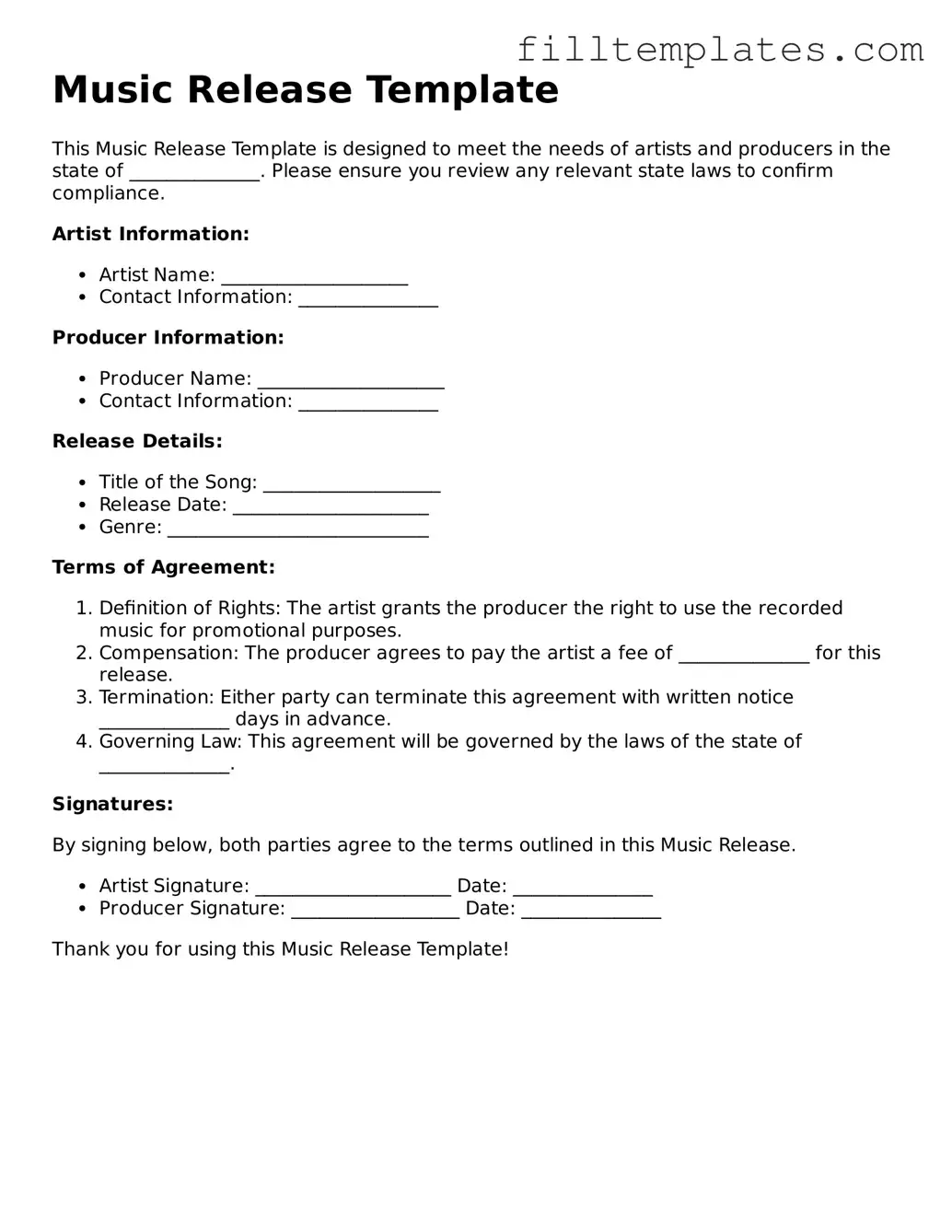Free Music Release Template
The Music Release form is a vital document that grants permission for the use of musical works in various projects, ensuring that artists receive proper credit and compensation. This form not only protects the rights of the creator but also clarifies the terms under which their music can be utilized. Understanding its importance can help both artists and producers navigate the often complex world of music licensing.
Open Music Release Editor
